Journalist and photographer Navalpreet Singh embarks on a journey to the historic Thatheras Bazar in Jandiala Guru, Amritsar, to capture the hardship, skills, and craftsmanship of the local Thatheras. With his camera in hand, Singh documents the lives of these artisans, renowned for their traditional metal crafts using brass, copper, and bronze. His photographs tell stories of resilience, heritage, and intricate craftsmanship, reflecting a rich cultural legacy passed down through generations. This craft is a testament to their skills and highlights the health benefits associated with the metals they use in making utensils for cooking and food preservation.
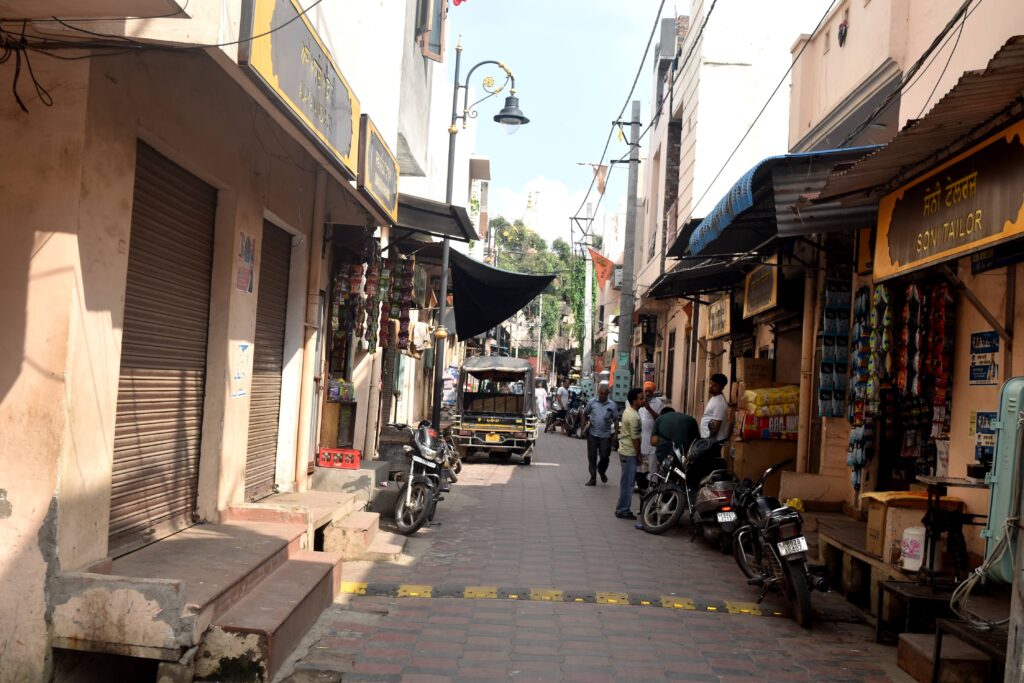
In 2014, the unique craft and skills of the Thatheras community of Jandiala Guru, Punjab, found their way into UNESCO’s List of the Intangible Cultural Heritage alongside the Turkish art of marbling and the Japanese technique of making hand-made paper called Washi. It is a rare honour—this is the first time a traditional craft from India has made it to the prestigious list—but it has not managed to revitalise the dying craft.
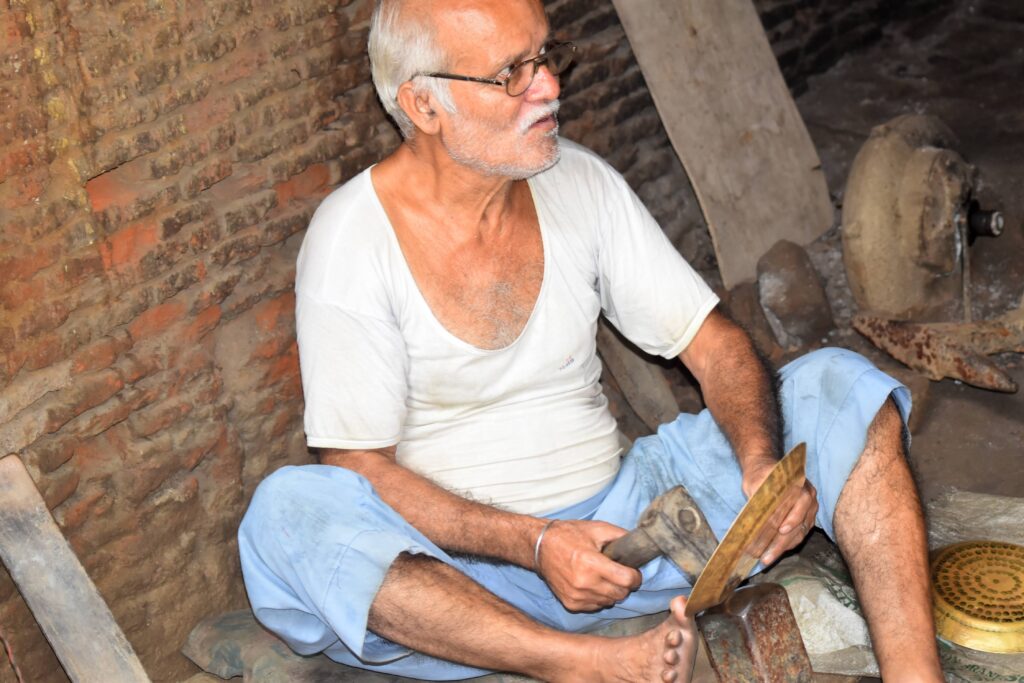
The process begins with procuring cooled cakes of metal, which are flattened into thin plates and then hammered into curved shapes to create a variety of items, from small bowls and rimmed plates to larger pots for water and milk, huge cooking vessels, and other artefacts.
Heating the plates while hammering and shaping them requires careful temperature control, achieved using small wood-fired stoves (aided by hand-held bellows) buried in the earth. The utensils are manually finished by polishing them with traditional materials such as sand and tamarind juice. Designs are crafted by skilfully hammering a series of tiny dents into the heated metal.
These utensils are made for both ritual and utilitarian purposes, serving individuals and communities, especially for special occasions such as weddings or temple ceremonies. The process of manufacturing is passed down orally from father to son. For the Thatheras, metalwork is not merely a livelihood — it defines their family and kinship structure, work ethic, and social status within the town’s hierarchy.

However, despite their extraordinary craftsmanship and the health benefits associated with using these metals for cooking due to their antibacterial properties and nutritional values, The Thatheras and manufacturers of these utensils face significant challenges. The hard labour required for this art often leads to low savings and financial instability, pushing this ancient craft towards extinction.
As per ‘Kulwant Singh’ manufacturer of these utensils, there were more than 150 families 20 years ago who were working in this field. Due to low margins, hard labour and industrial support, only 15-20% of families are left, and in the coming 10 years, you may see only a handful of people there. Youths are not willing to do this type of work. They prefer to work in showrooms and stores with ACs. They are not meant for the hard lives. It is crucial to support these artisans to preserve an important cultural legacy and promote sustainable practices that are good for our health.

The delicate balance of heating, cooling and hammering showcases the dedication and precision involved in this traditional craft. Ravinder Singh, a utensils shopkeeper in this market, said that machine-made utensils are cheaper as they have high production in less time. The handmade utensils are costlier than that, per kg for brass utensils there is a difference of RS. 200-300. So the general people prefer machine-made utensils, and they have nothing to do with handmade. Only professional cooks or some people from Dhaba and Restaurants purchased handmade alloyed utensils as they have long durability.

Jagdeep Singh, another craftsman, said that his father, Harnam Singh, migrated from Peshawar (in current Pakistan) after partition, as Jandiala Guru is the hub of making alloy utensils and musical instruments (dholki and duggi metal base) in Punjab. Looking back at history, researchers say Maharaja Ranjit Singh had set up manufacturing centres in Amritsar, a great trading centre at that time, to increase the influence of trade. Further, Jagdeep says that the procedure for making utensils is detailed and laborious, and the profit margins do not cover the expenses. “The metal has become costly, especially bronze, and raw materials like coal are also not subsidised. On top of that, one has to devote eight to 10 hours to the manufacturing process, which includes melting and hammering the metal. The art is dying as the next generation is not willing to pursue it,” he says.
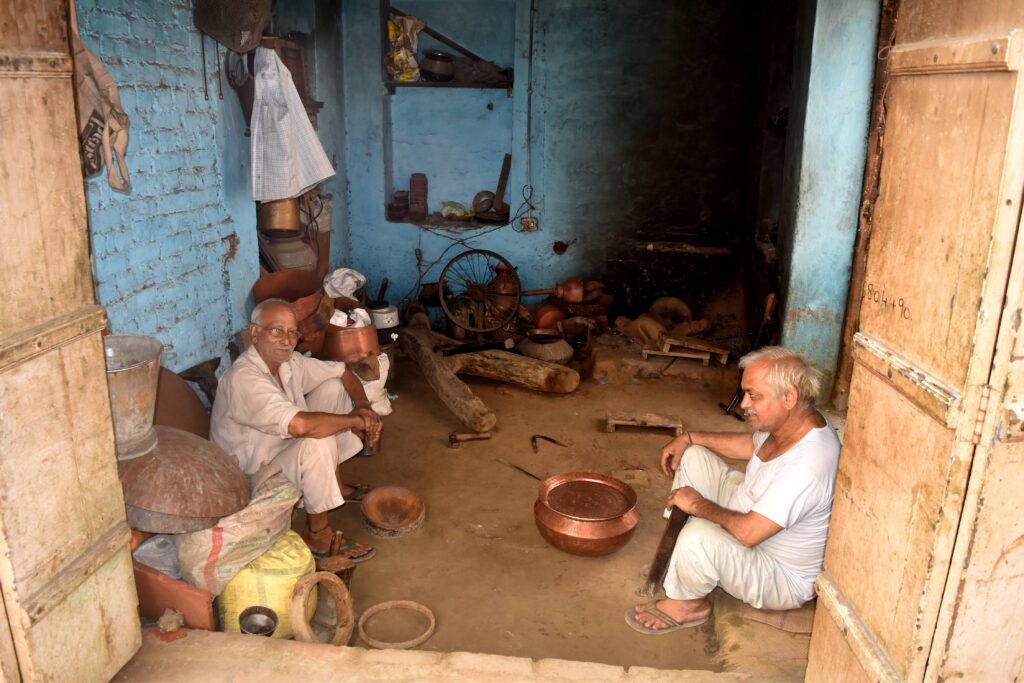
No young generation or women were found during the visit; only aged and senior artisans were at work. Walking through the streets of Thatheras Bazar, it becomes clear that the craft of making brass and copper utensils is predominantly male-dominated. While a few women can be seen selling these products in one or two shops, none are involved in the actual craftsmanship. When asked about this, the response was consistent: the craft requires hard labour, which has traditionally been considered suitable for men.

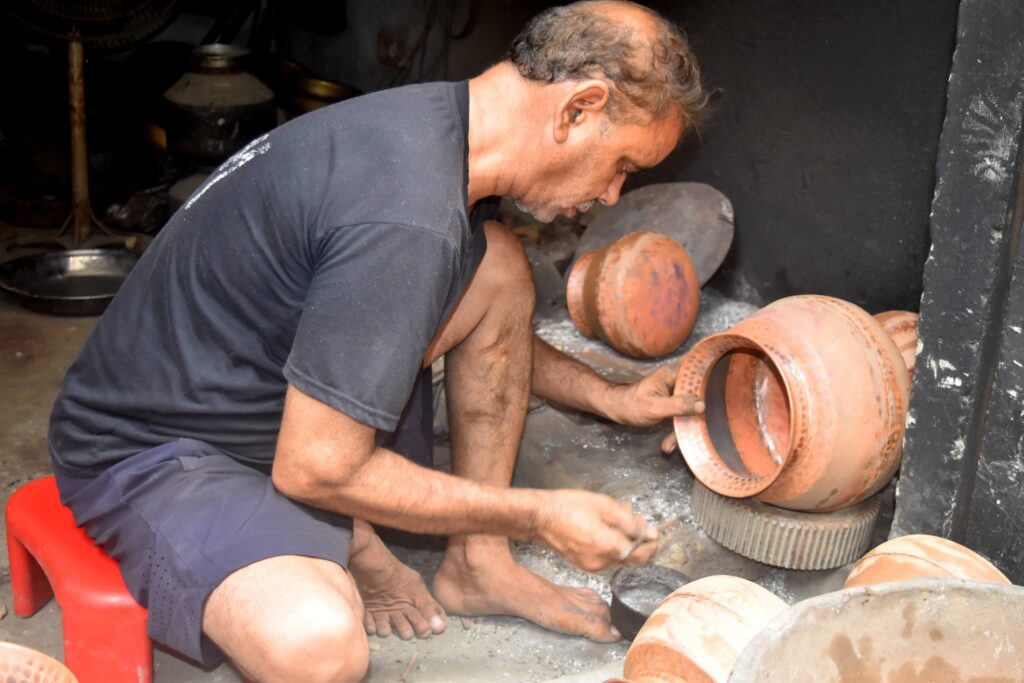
A skilled craftsman carefully solders a brass pitcher
In 2018, Deputy Commissioner of Amritsar, S. Kamaldeep Singh Sangha, in collaboration with ENACTUS from Shri Ram College of Commerce, launched a joint initiative called “Project Virasat” to promote the products of the Thathera community at various exhibitions in smarter, modern ways. The Amritsar Chamber of Commerce also supported the initiative by providing prominent spaces at PITEX exhibitions and other Punjab trade fairs.
Jaideep Singh, Convener of the Amritsar Zone for the PHD Chamber of Commerce & Industry, emphasized the need to establish a cooperative society to uplift the economic status of the Thathera community. He also suggested introducing a travel tour option for visitors to Amritsar, allowing them to explore Thathera Bazar and learn about the community’s art and skills. Additionally, he proposed the creation of exhibition and craft centres near the Wagah Border or other major historical sites, which would boost the community’s economy, as Amritsar attracts between 100,000 and 200,000 visitors daily.
S. Kamaljit Singh Sangha (Retd.), former Deputy Commissioner of Amritsar, played a pivotal role in elevating the Thathera community’s project from its early stages to international recognition, providing crucial guidance and support. In an interview with Voices magazine, he mentioned forming several committees and platforms to support the Thatheras and collaborating with ENACTUS from Shri Ram College of Commerce. He requested S. Navjot Singh Sidhu, Punjab Cabinet Minister in 2018, to visit and offer his support to the community. Following his visit, Sidhu announced a Rs. 10 lakh grant for the Thatheras and assured assistance in promoting their art and skills. As Deputy Commissioner of Amritsar, Mr. Sangha worked to ensure that their products became exclusive, fashionable, and recognized as part of UNESCO’s Intangible Cultural Heritage. He also facilitated various meetings and offered continued support to the students of Shri Ram College of Commerce, helping them take this project to the international stage, ultimately leading to greater recognition and financial improvement for the Thathera community.
The future of this traditional craft, however, is under threat. As modernization sweeps across industries and low-profit margins make handcrafting less viable, the skilled artisans of this trade face the risk of extinction. Without significant efforts to support and promote this ancient art form, we may soon witness the disappearance of an important cultural heritage.
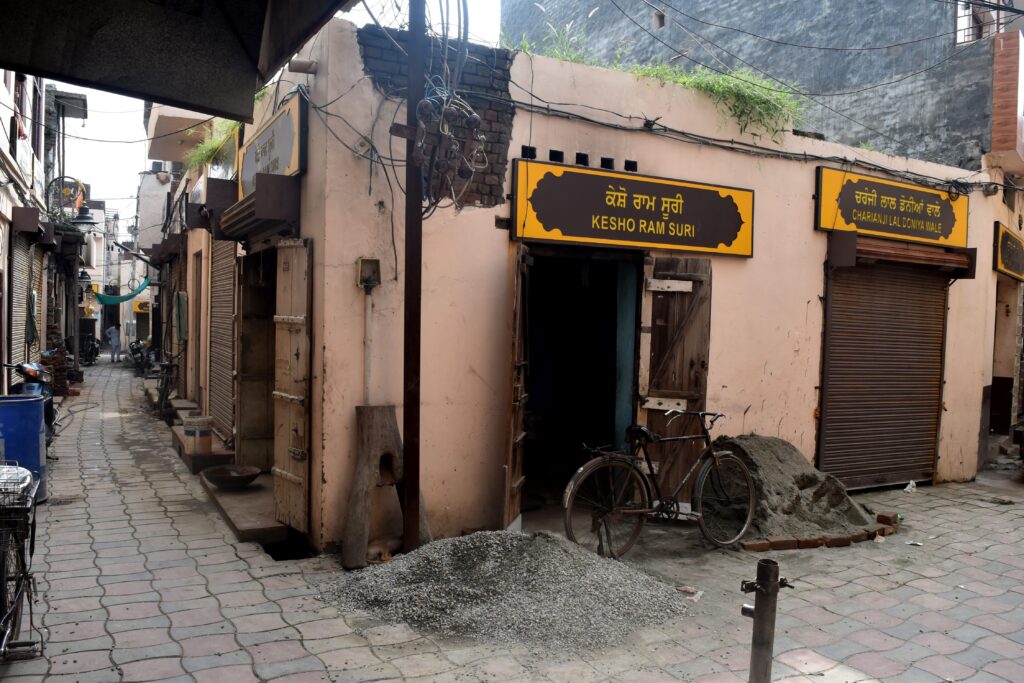
The Renovated Thatheras Bazar in 2023 before the G20 Amritsar Chapter
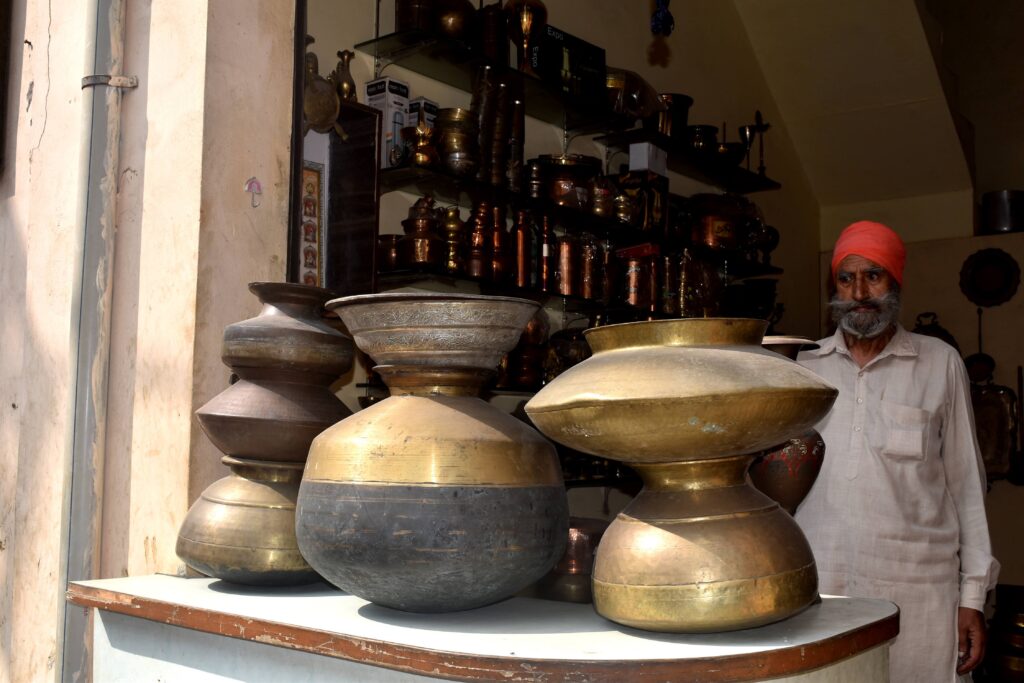
Utensils prepared by the Thatheras
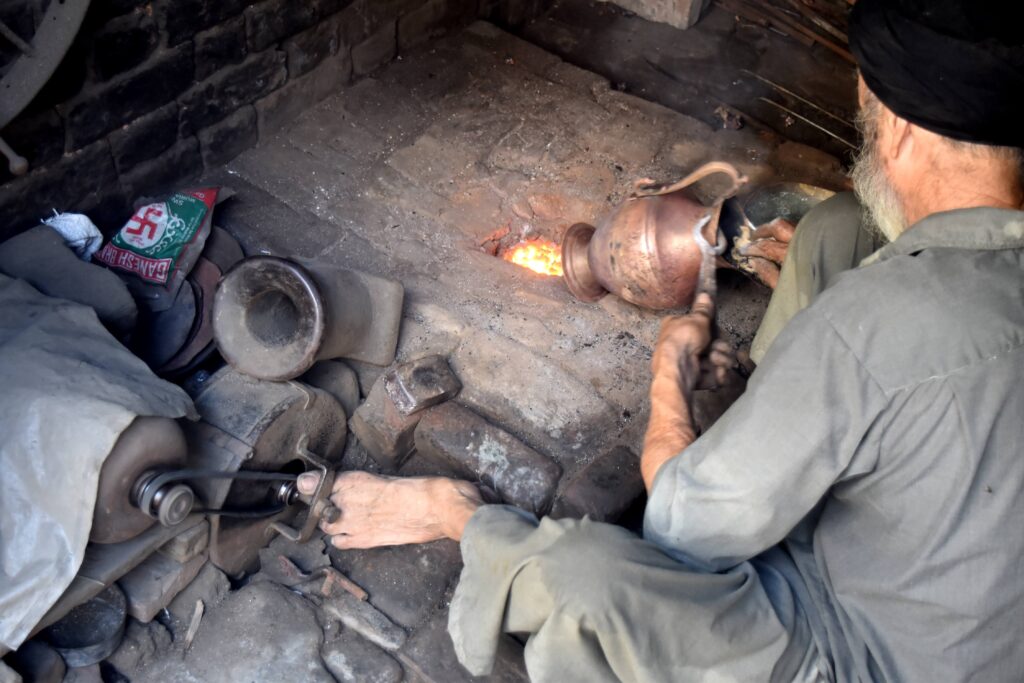

Copyeditor: Madhupriya Sengupta
